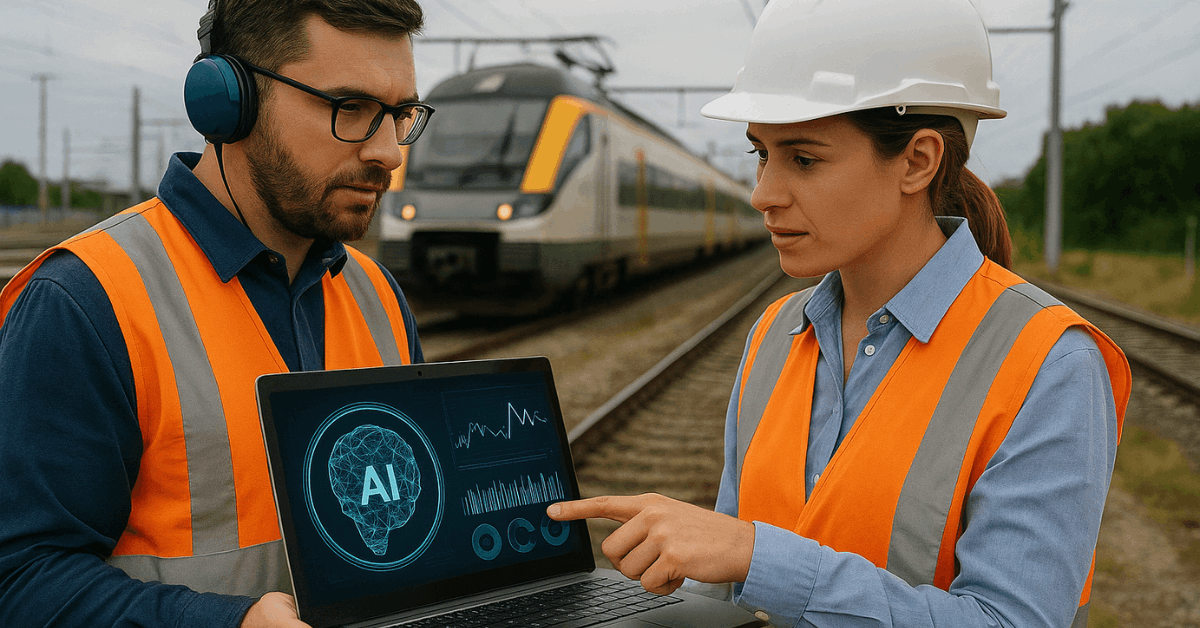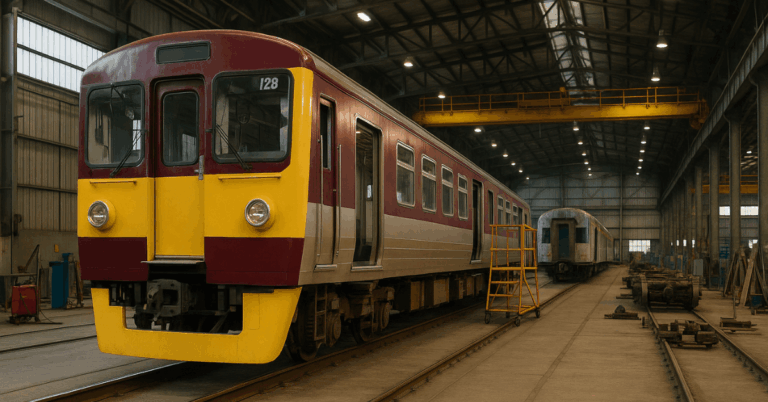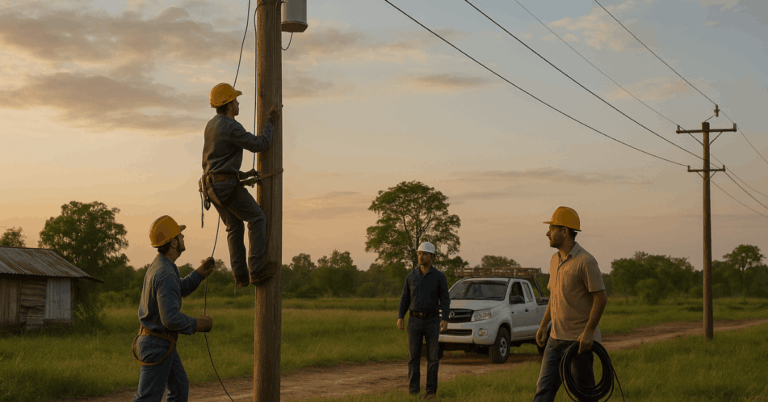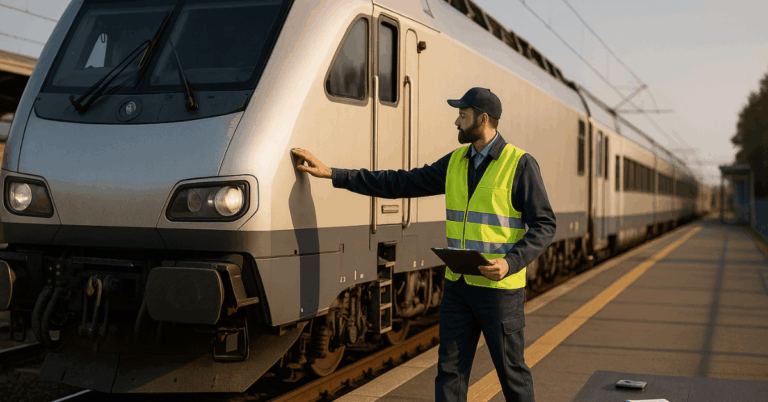Railways are entering a new phase of modernization where technology drives safety and efficiency. AI predictive maintenance in railways allows operators to detect faults before they disrupt operations.
This approach combines artificial intelligence with sensor data to optimize repair schedules. It helps reduce costs, prevent accidents, and ensure trains run safely and on time.
Understanding Predictive Maintenance
Predictive maintenance represents a crucial evolution in how railways manage assets. It focuses on anticipating issues before they lead to service disruptions.
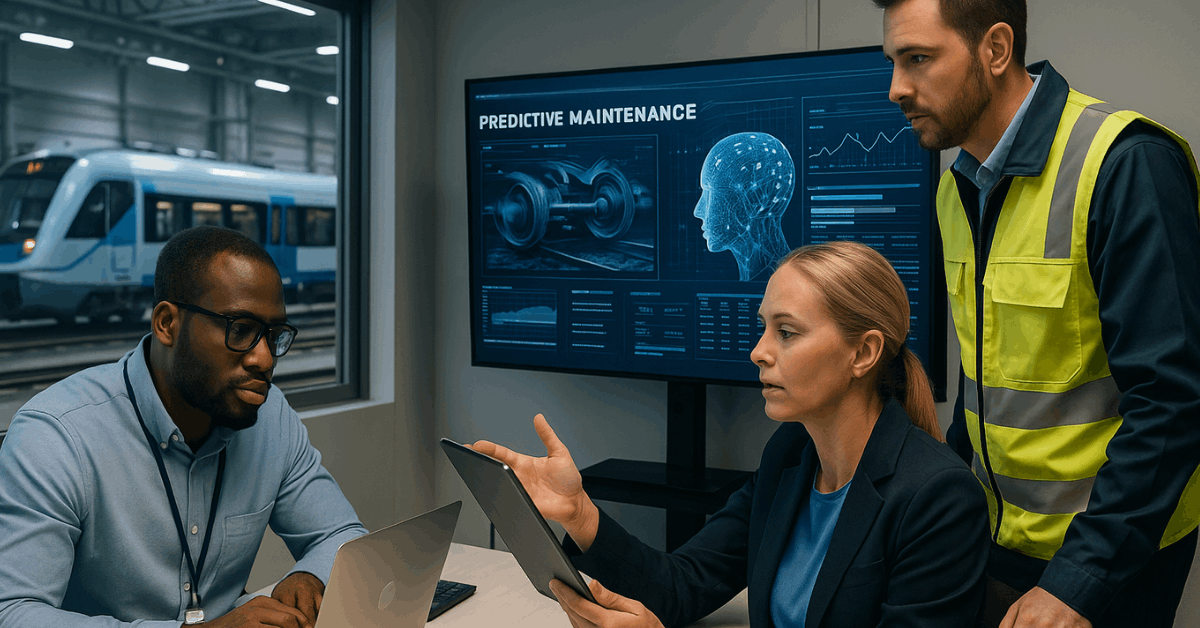
From Reactive to Proactive Maintenance
Traditional maintenance methods address failures after they occur. Predictive maintenance changes this by using data analysis and sensor feedback to forecast problems.
This transition reduces emergency repairs and service delays. As a result, railways achieve better reliability and cost efficiency.
Real-Time Monitoring Systems
Modern systems monitor assets in real time using IoT sensors and machine learning models. These technologies track conditions such as vibration, temperature, and pressure.
Early detection allows teams to respond faster to irregularities. Continuous observation ensures smoother and safer operations.
Data-Driven Forecasting
Data collected from trains and infrastructure is analyzed through AI algorithms. The system identifies performance trends that signal potential failures.
By acting on these insights, operators prevent unexpected breakdowns. This predictive model enhances efficiency and maintenance precision.
Operational and Financial Impact
Predictive maintenance directly improves financial and operational outcomes. It lowers overall maintenance expenses and minimizes downtime.
Better planning means fewer disruptions in daily train schedules. The outcome is improved passenger satisfaction and stronger network performance.
How Predictive Maintenance Works?
Before diving into details, it’s important to understand how predictive maintenance works. It relies on continuous monitoring and smart analytics to keep systems efficient.
- Data Collection: Sensors along tracks, wheels, and engines continuously gather operational information.
- Data Analysis: Machine learning models process data to detect irregular patterns early.
- Anomaly Detection: Algorithms identify vibrations, temperature fluctuations, or part wear that indicate potential faults.
- Instant Communication: Insights are transmitted immediately to maintenance teams for action.
- Operational Efficiency: This proactive method minimizes manual inspections and prevents unexpected service disruptions.
Key Benefits for Railways
Predictive maintenance offers measurable benefits to railway systems worldwide. It strengthens efficiency, lowers costs, and enhances safety performance.
Improved Reliability and Uptime
Implementing predictive maintenance improves fleet reliability by reducing unplanned breakdowns. It enables timely repairs through early detection of issues.
Fewer equipment failures translate into smoother daily operations. As a result, service disruptions and repair expenses decrease.
Smarter Maintenance Scheduling
AI-powered systems make maintenance scheduling smarter and more efficient. Data-driven insights guide technicians to prioritize tasks effectively.
This optimization saves time and labor resources. Maintenance becomes proactive rather than reactive.
Enhanced Passenger Satisfaction
Trains operating with fewer delays directly improve passenger experiences. Predictive maintenance reduces the inconvenience caused by sudden stoppages.
Consistent performance fosters trust in railway services. This reliability boosts customer satisfaction across all routes.
Long-Term Infrastructure Health
Continuous monitoring helps infrastructure last longer and perform safely. Regular assessments prevent gradual wear from escalating into major issues.
Early intervention reduces repair frequency and costs. Long-term durability supports sustainable railway growth.
Cost Efficiency and Safety
Predictive maintenance ensures both cost efficiency and safety improvements. Early fault detection minimizes expensive emergency interventions.
Efficient resource use leads to reduced operating costs. Passengers and staff benefit from a safer, more reliable railway environment.
The Role of Artificial Intelligence
Artificial intelligence forms the foundation of predictive maintenance systems. AI analyzes massive amounts of data from trains and infrastructure.
It detects patterns invisible to traditional methods, allowing early detection of mechanical stress. Through automation, AI systems learn from past maintenance events.
They continuously refine their predictions, improving accuracy and response times.
Machine Learning in Action
Machine learning enables AI systems to adapt to new data. When a train component behaves differently from normal, the algorithm compares it with thousands of past readings.
It estimates the likelihood of failure based on historical outcomes. Engineers receive alerts, allowing maintenance to be scheduled immediately. This reduces human error and enhances maintenance efficiency.
Computer Vision for Inspections
AI-powered cameras and drones are now used to inspect railway infrastructure. They capture high-resolution images of tracks, tunnels, and bridges. Computer vision algorithms analyze these images for cracks, misalignment, or corrosion.
This process is faster and more precise than manual checks. It enables engineers to prioritize repairs with better accuracy and reduced risk. Learn more from Siemens Mobility’s AI rail solutions.
Integration with IoT Systems
The Internet of Things (IoT) connects all data points within the railway network. Sensors communicate directly with central systems, providing constant updates. AI processes this data to predict issues in real time.
IoT integration makes railway operations more transparent and responsive. It transforms maintenance from a reactive process into a continuous improvement cycle.
Global Adoption and Success Stories
Countries worldwide are investing in predictive maintenance technologies. AI adoption has become part of railway modernization strategies.
Governments and private companies recognize the benefits of reducing accidents and delays. The following examples highlight how this transformation is already underway.
Japan and Germany Lead in Innovation
Japan’s railways use AI-based inspection systems to monitor track conditions continuously. These systems predict maintenance needs weeks in advance.
Germany’s Deutsche Bahn has implemented smart maintenance hubs powered by AI, as explained in their digital maintenance overview.
Data from trains and tracks is analyzed centrally for proactive scheduling. Both nations have reported improved safety and reduced downtime.
Learning Opportunities for Railway Professionals
Predictive maintenance also offers valuable lessons for professionals and engineers in the railway industry. It encourages continuous learning and the adoption of advanced digital tools.
Skill Development and Training
Maintenance teams need to enhance their digital and analytical skills. Understanding AI and IoT systems ensures they can interpret data effectively.
Ongoing training programs keep staff updated on evolving technologies. This investment builds a more capable and adaptable workforce.
Collaboration Between Disciplines
Predictive maintenance promotes collaboration among engineers, data scientists, and management teams. Cross-disciplinary communication accelerates innovation and problem-solving.
By sharing data insights, teams can prevent system-wide issues faster. Cooperation strengthens decision-making and system reliability.
Research and Development Expansion
Continuous research leads to improved predictive algorithms and maintenance models. Rail companies investing in AI-driven R&D gain a technological advantage.
Testing new analytics tools allows for better fault detection. These innovations help the global rail industry move toward smarter operations.
Policy and Standardization Efforts
Developing consistent standards ensures compatibility between international systems. Governments and railway authorities must work together on data-sharing frameworks.
Common regulations enhance safety and technology adoption. This global alignment supports efficient collaboration and progress.
Moving Forward with Intelligence
The integration of AI predictive maintenance in railways marks a turning point in transportation management. It transforms maintenance from a reactive burden into a proactive strength.
Operators benefit from improved safety, lower costs, and greater efficiency. As countries continue investing in smart rail technology, railways will become safer and more sustainable for future generations.
